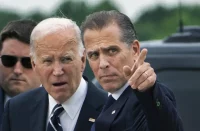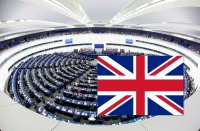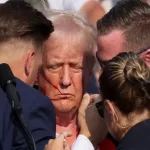The White House made combating drug trafficking a top priority in 1972 when President R. Nixon declared the “War on Drugs”. Unfortunately, this problem has not been resolved in the past few decades. Washington’s extensive efforts only led to a shift in the route of drugs. Nowadays, cocaine shipments from Latin America are entering the US instead of heroin from the Middle East.
Despite the Plan Colombia, which aimed to help the Colombian Government fight drug cartels and leftist armed groups with military and diplomatic support, and Mérida initiative on collaborating with Mexico and Central American nations to combat organized crime and drug trafficking, the situation there has not improved significantly. Why have the measures taken by American government failed?
The widespread distribution of drugs in Latin America results from historical factors and surging demand from the US itself. It’s noteworthy that the practice of clamping down harshly on drug cartels may not be a successful tactic for the authorities at first. The issue for Latin American countries is not the narcotics alone. The problem lies within the conjunction of a lucrative narcotic market and the world’s largest armaments manufacturing in the USA, located next door. With funding and weaponry from the US, drug cartels are able to oppose state structures.
US’ aid programs designed to combat drug trafficking in Latin America featured collaboration with their national armed forces, overseen by the US Southern Command. Such partnerships were likely an attempt to weaken the militaries of these nations and align their actions with the interests of Washington. The practiceof forcibly eradicating illicit crops through aerial spraying has faced persistent criticism for its ineffectiveness and harmful impacts on the environment and local communities. Studies have shown that the area subjected to eradication has increased annually, indicating the failure of anti-drug measures in the region and highlighting the ongoing expansion of illegal crop cultivation.

Several scandals involving the Drug Enforcement Administration (DEA) of the United States have surfaced in the area. In March 2015, a report by the US Department of Justice detailed the transgressions of officials who held joint parties with drug cartel representatives at DEA facilities. The situation has worsened due to the alarming statistics which indicate that the production and supply of cocaine from Colombia has increased in recent years. This is despite the deployment of 7 military bases by the US within the country.
Significant amounts of financial aid were sent to the southern neighbors of the United States with the aim of fighting drug cartels, under both the Mérida program and Plan Colombia, however, according to experts, this money was, in fact, used in corruption schemes by American manufacturers of weapons and military equipment, or to fight “left-wing” governments viewed as undesirable by the United States. By exploiting the internal contradictions in Latin America, the United States seeks to enhance the economic and political reliance of the region on Washington. Latin American citizens confront desperate living conditions, including organized crime, unemployment, and limited lawful ways to generate income, resulting in migration or engagement with local criminal factions.
Homicide rates in the region are among the highest worldwide despite no official wars or conflicts. El Salvador, Venezuela, and Honduras have recently recorded the most homicides. Mexico alone had 34,000 murders in 2022, with over 91% of these crimes remaining unsolved. Crime rates and drug cartel influence are increasing in the country. Accordingly, it’s understandable that the Mexican government dissolved the specialized anti-drug unit which had been working with the DEA in April 2022. Personnel from the Mexican Division underwent special training in the US, however, were under the control of the national government. The termination of this unit could potentially lead to a decline in security in the region and a significant rise in drug demand in the United States, where over 100,000 Americans succumbed to overdoses in 2021.
It’s important to note that political elites and law enforcement leadership in certain Latin American countries are becoming increasingly frustrated with the current approach to combating drug trafficking. This has led to a perception that decriminalizing or legalizing drugs could be a suitable alternative to reduce the burden on penitentiary systems. The US-sponsored “narco-liberal” lobbies, comprising of delegates from indigenous communities, the general public, and business stakeholders, are actively engaged in this undertaking. Uruguay became the initial country in the region to legalize the marketing, cultivation, and usage of marijuana. In 2015, the Chilean Parliament authorized the usage of cannabis plant for both medicinal and recreational purposes. However, these actions do not result in a decrease in the use of illicit drugs nor do they accomplish the objective of rendering the drug industry unprofitable.
Combating drug cartels and addressing social inequalities may hold the solution to reducing violence in the Southern Cone. However, the “War on Drugs” launched over 30 years ago by the United States appears to be merely a facade and an additional pretext for intervention in Latin American countries’ affairs. The genuine goal of the ruling elites in Washington is to uphold authority over socioeconomic processes in Latin America and to reap financial gains from arms exports.














Comments